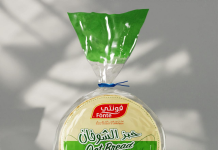
Sabic, a global leader in the chemical industry, introduced LNP ELCRIN WF0061BiQ resin, a novel material that uses ocean-bound polyethylene terephthalate (PET) bottles as a feed stream for chemical upcycling into polybutylene terephthalate (PBT) resin. Ocean-bound plastic is mismanaged waste that originates within 30 miles (50 km) of the coast and is likely to end up in the ocean.
The new grade is the latest addition to Sabic’s extensive portfolio of chemically upcycled LNP ELCRIN iQ materials, which help support circularity while serving as potential drop-in replacements for virgin PBT resins. LNP ELCRIN WF0061BiQ resin is a candidate for consumer electronics applications such as fan housings in computers and automotive seating, as well as electrical connectors and enclosures.
“We’re continually expanding our LNP ELCRIN iQ portfolio – and the PET waste streams used to produce these materials – to help divert more plastic from the oceans while helping our customers incorporate recycled materials in their products, achieve their carbon neutrality goals and meet consumer demands for greater sustainability,” said Sanjay Mishra, general manager Technology and Footprint, Specialties, Sabic. “Within the next decade, we anticipate upcycling 10 billion plastic bottles into higher-performing, durable materials that deliver enhanced value to customers.”
Sabic is committed to working with the plastics supply chain to find new solutions to address urgent environmental issues such as reducing ocean-bound plastic waste and achieving net-zero carbon emissions.” The new LNP ELCRIN WF0061BiQ grade, a glass fiber-reinforced PBT material, features non-brominated, non-chlorinated flame retardancy meeting the UL94 V0 standard at 0.8mm and F1 rating. It also delivers excellent heat resistance, toughness, and stiffness, and high flow well-suited for molding thin-wall applications for outdoor environments such as electrical equipment enclosures. All LNP ELCRIN iQ materials can serve as possible drop-in replacements for conventional PBT to help manufacturers increase the sustainability of end products. Sabic’s proprietary upcycling technology, which involves the repolymerization of ocean-bound PET into PBT, delivers virgin-like performance properties. This process surpasses mechanical recycling in quality and consistency.
“According to an internal life cycle analysis conducted in accordance with ISO 14040/14044 protocols, LNP ELCRIN WF0061BiQ compound can offer potential reductions of up to 14% in carbon footprint and up to 25% in cumulative energy demand, when compared to the virgin PBT compound reinforced with glass fiber,” said Darpan Parikh, Americas Customer Fulfillment Leader, Specialties, Sabic. “By replacing virgin material with our resins, customers can help reduce environmental impacts by reusing plastic waste and eliminating halogenated additives.” In addition to SABIC’s new LNP ELCRIN WF0061BiQ resin, based on ocean-bound PET bottles, the company has introduced many different and innovative grades to the LNP ELCRIN iQ portfolio, including glass- and mineral-reinforced products and flame-retardant formulations. For example, Sabic’s new LNP ELCRIN WF006XXPiQ and LNP ELCRIN WF61XPiQ compounds incorporate pre-consumer recycled glass fiber diverted from the waste stream of industrial processes. The use of recycled glass fiber further enhances the circularity of these upcycled PBT materials. The diversity of these formulations enables LNP ELCRIN iQ resins to be considered for applications beyond electrical and electronics components, such as automotive exterior parts, healthcare applications, and personal care products.
Sabic is not only creating sustainable materials but also regularly formulating new resins and compounds using environmentally responsible and safer chemistries, such as non-brominated/non-chlorinated flame retardants. According to the GreenScreen for Safe Chemicals benchmark rating, which was created by the non-profit organization Clean Production Action (CPA), these SABIC materials, and others in development, are, or will be, recognized with a score of 3 or higher, out of 4. Benchmark 3 is a relatively better result compared to that of average products and indicates only a slight concern.










